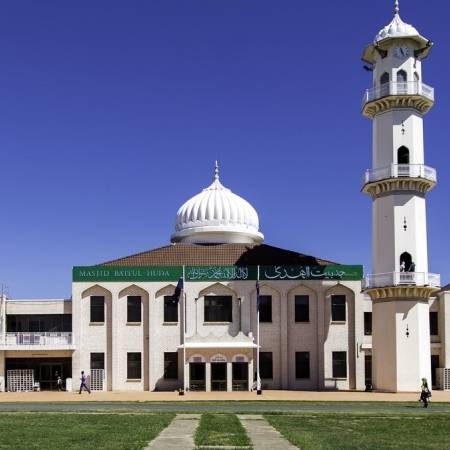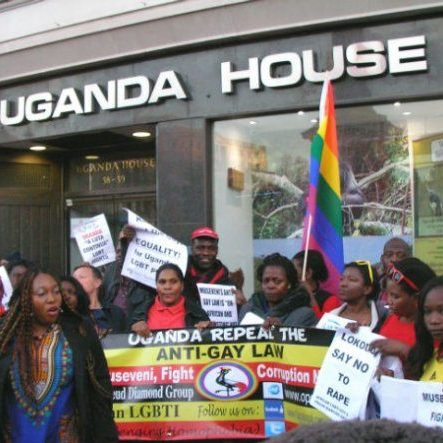 Is gender equality going backwards?
Is gender equality going backwards?
It’s International Women’s Day on March 8, which means that I will spend my day sharing feminist content on social media and telling all my female (and nb) peeps to register to vote, as I do most years. But this year, I’ve also looked at the World Economic Forum’s 2017 Global Gender Gap report, and it made for some sobering reading. It said that gender parity has actually gone backwards for the first time since they began measuring it.
In the 21st century, women have it pretty good compared with the last few centuries of oppression and suppression but actual equality… that’s still a long way off. Especially if some countries have gone backwards on women’s rights.
So, let’s take a little look at the WEF report, which measures women’s Economic Participation and Opportunity, Educational Attainment, Health and Survival, and Political Empowerment. Well, Iceland took the top spot with 0.87 out of a possible 1 (or 87%). Yes, even in the most equal country on earth, women are still 13% less equal! Meanwhile, Australia was ranked 35th and the US came in a 49, which is shockingly low imo. But I’m guessing that you’re reading this from Australia or the US and you don’t need me to summarise why full equality isn’t yet a thing in your country. Instead, I’m going to head down to the bottom of the list and focus on some of the worst countries in the world for women.
Selection Criteria
This selection is not the bottom nine, but it is a selection of the worst. For each country, I’ve chosen to focus on just one of the reasons that women there are treated as second-class citizens, but there will be overlaps.
You should know that this was hard to write and it will be hard to read, so I recommend opening a new tab with happier content in case you need to take a break.
Trigger Warning: Sexual Assault, Rape, Violence against Women, Child Abuse
Egypt and Female Genital Mutilation
According to the World Health Organisation (WHO), Egypt has the highest rate of female genital mutilation (FGM) in the world, with more than 125 million Egyptian girls subjected to it. FGM is defined by the WHO and UNICEF as ‘the partial or total removal of the external female genitalia or other injury to the female genital organs for non-medical reasons’. It may even involve sewing the labia minora or majora together. FGM is fabled to stop unmarried women from engaging in sexual activity and make a woman ‘clean’. This is, of course, a pack of lies.
The reality is that it has no known health benefits and plenty of risks due to the unsanitary conditions in a completely unnecessary procedure.
- Bleeding
- Urine Retention
- Bladder Infection
- Gangrene
- Necrotizing Fasciitis (flesh-eating disease)
- STDs
- Infertility
- Increased Neonatal Mortality
For those of you who have now clenched your thighs together and keep dry-heaving on your laptop, there is hope. Equality Now has launched a campaign to end the brutal practice and you can get involved here.
Saudi Arabia and Women’s Participation in Government
Saudi Arabian women were not allowed to vote until 2015, but there’s a big difference between being technically allowed to participate in democracy and actually having access to it. For starters, only 130,000 women were registered, compared with 1.35 million men. They faced difficulties registering due to societal pressures and the refusal of male guardians. Those numbers are not much better now.
Yemen and Self-Autonomy
Yemeni women cannot marry without the permission of a male guardian. They do not have equal rights in divorce or child custody and have few protections against domestic and sexual violence. There is no legal minimum age for marriage and, as a result, 52% of girls are married before the age of 18. Most disturbingly, they cannot even receive health care without the permission of the male guardian. Human Rights Watch has advocated an overhaul of the Constitution of Yemen to prevent discrimination against women, grant women equal rights and set a minimum age for marriage at 18.
Afghanistan and the Maternal Mortality Rate
Afghanistan’s maternal mortality rate is the highest in the world. One woman dies in childbirth every 30 minutes there, which brings their average life expectancy down to 45. There are several reasons for this, starting with the fact that Afghan girls are discouraged (sometimes, fatally) from seeking an education and many remain illiterate, which means that they may not be as well-educated in health care, reproduction, or relationships. More than 50% of women getting married in Afghanistan are under the age of 16 and, as a result, start having children before their bodies are physically mature enough. Almost 85% of women give birth without medical attention, meaning that complications- especially those from being too young when giving birth- go untreated until it’s too late. Then, there’s the violence (both sexual and domestic) that they suffer which can lead to complications in childbirth.
Nepal and Child Marriage
Nepal’s rate of child marriage is so bad that daughters who aren’t married by their teens may be sold to traffickers. This early marriage results in early childbirth and coupled with Nepal’s lack of appropriate health care, means that nearly a quarter of all women will die during pregnancy or childbirth. Nepal’s official minimum age for marriage is 20 but it has the third highest rate of child marriage in Asia according to UNICEF. Human Rights Watch said that girls are married off as young as one and a half; they also stated that victims of child marriage often experienced deeply harmful consequences such as lack of education and early child-rearing.
Iran and Blockade in Women’s Employment
A new bill, aiming to reduce the number of women in employment passed the Iranian Parliament in May 2016. It is part of a movement to push women back into the sphere of home and child-rearing rather than allowing them to fulfill their potential in the workplace. Women’s studies researcher Nasrin Afzali said that has led to increased job instability for women, with women less likely to be hired or promoted. Although women are allowed to work, a husband may also prevent his wife from working if he deems it damaging to his image. In other instances, some positions are not open to women, even if they have the same educational attainment as men. Only 11% of Iran’s workforce is women, one of the lowest rates in the world.
India and Rape
India is no stranger to news coverage of particularly gruesome gang rapes, with an estimate that a woman is raped every 29 minutes in the country. One of the biggest outcries in recent times was the 2012 gang rape of medical student Jyoti Singh, which resulted in her violent, painful death. Many of the rapes occur because of the endemic and widespread domestic violence problem in the country. Renuka Chowdhury, junior minister for women and child development, estimates that around 70% of Indian women are victims of domestic violence.
Pakistan and Honor Killings
Reports of honor killings have spread around the world, mainly due to rising incidents in the Western World. Honour killings describe an act of murder thought- by the killers, at least- to restore the reputation of a family after perceived immoral behavior from a family member; most often a woman. Most often, it’s a result of infidelity, refusal to submit to a forced marriage, asking for a divorce, or even being raped. It’s on the rise in Pakistan with religious extremists targeting female politicians, human rights workers and lawyers. Around 1,000 women were the victims of honor killings in 2015 alone.
Iraq and Female Illiteracy
Iraq once had one of the highest rates of female literacy in Arab countries but it now has one of the lowest, thanks in no small part to the fear of violence, rape or kidnapping associated with girls attending school. While access to primary education is relatively equal, the gap widens significantly in secondary school. The UN estimates that in some rural areas, 47% of women are illiterate. Restrictions on education lead to restrictions in the workplace and so many women are forced to stay home.
So what do you think about the countries we listed? Do you live in any of these countries and want to share your experiences? Let us know below.




